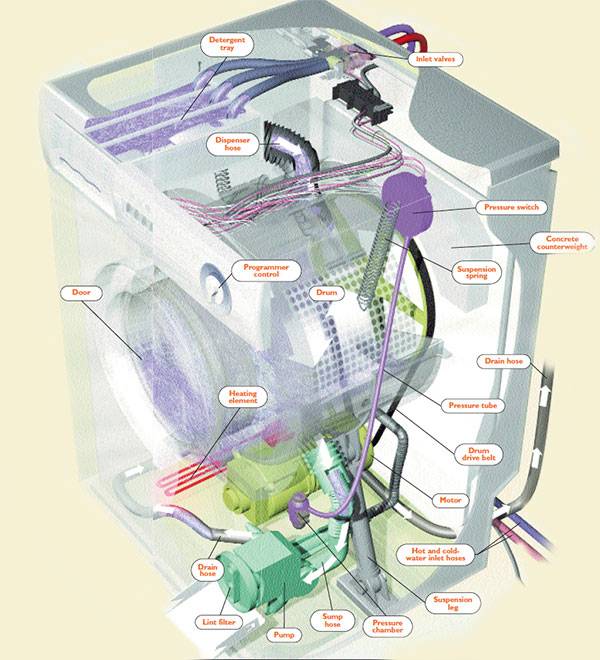Here's something to understand: The human cerebrum is more unpredictable than some other known structure known to man. By and large, this supple mass of fat and protein is comprised of two general sorts of cells—called glia and neurons—and it contains a huge number of each. Neurons are striking for their branch-like projections called axons and dendrites, which accumulate and send electrochemical signs. Various kinds of glial cells give physical insurance to neurons and help keep them, and the mind, sound.
Together, this unpredictable organization of cells offers ascend to each part of our common mankind. We were unable to inhale, play, love, or recollect without the cerebrum.
Anatomy of the brain
The cerebrum is the biggest aspect of the mind, representing 85 percent of the organ's weight. The unmistakable, profoundly wrinkled external surface is the cerebral cortex. The cerebrum makes the human mind—and consequently people—so imposing. Creatures, for example, elephants, dolphins, and whales really have bigger minds, however people have the most evolved cerebrum. It's stuffed to limit inside our skulls, with profound folds that shrewdly augment the complete surface zone of the cortex.
The cerebrum has two parts, or sides of the equator, that are additionally isolated into four locales, or flaps. The frontal flaps, situated behind the temple, are engaged with discourse, thought, learning, feeling, and development. Behind them are the parietal flaps, which measure tangible data, for example, contact, temperature, and torment. At the back of the cerebrum are the occidental projections, managing vision. Finally, there are the fleeting projections, close to the sanctuaries, which are engaged with hearing and memory.
The second-biggest aspect of the mind is the cerebellum, which sits underneath the rear of the cerebrum. It assumes a significant part in planning development, stance, and equalization.

The third-biggest part is the encephalitic, situated in the center of the mind. A complex of structures generally the size of an apricot, its two significant areas are the thalamus and nerve center. The thalamus goes about as a transfer station for approaching nerve driving forces from around the body that are then sent to the proper cerebrum locale for preparing. The nerve center controls hormone emissions from the close by pituitary organ. These hormones administer development and instinctual practices, for example, when another mother begins to lactate. The nerve center is likewise significant for keeping substantial cycles like temperature, yearning, and thirst adjusted.
Situated at the organ's base, the cerebrum stem controls reflexes and essential life capacities, for example, pulse, breathing, and circulatory strain. It additionally directs when you feel sluggish or conscious and associates the cerebrum and cerebellum to the spinal rope.
The cerebrum is very touchy and sensitive, thus it requires greatest assurance, which is given by the hard bone of the skull and three extreme films called meninges. The spaces between these layers are loaded up with liquid that pads the cerebrum and shields it from being harmed by contact with within the skull.
Blood-mind obstruction
Need more verification that the mind is unprecedented? Look no farther than the blood-cerebrum hindrance. The disclosure of this one of a kind component dates to the nineteenth century, when different investigations uncovered that color, when infused into the circulation system, hued the entirety of the body's organs aside from the mind and spinal line. A similar color, when infused into the spinal liquid, colored just the cerebrum and spinal line.
This drove researchers to discover that the cerebrum has a cunning, defensive layer. Called the blood-mind boundary, it's comprised of extraordinary, firmly bound cells that together capacity as a sort of semi-penetrable door all through a large portion of the organ. It keeps the mind condition protected and stable by forestalling a few poisons, microorganisms, and other hurtful substances from entering the cerebrum through the circulatory system, while at the same time permitting oxygen and imperative supplements to go through.
Health conditions of the brain
Obviously, when a machine as finely adjusted and perplexing as the mind gets harmed or breakdowns, issues emerge. One of every five Americans experiences some type of neurological harm, a wide-extending list that incorporates stroke, epilepsy, and cerebral paralysis, just as dementia.
Alzheimer's sickness, which is portrayed to a limited extent by a slow movement of momentary cognitive decline, bewilderment, and emotional episodes, is the most widely recognized reason for dementia. It is the 6th driving reason for death in the United States, and the quantity of individuals determined to have it is developing. Around the world, nearly 50 million individuals experience the ill effects of Alzheimer's or some type of dementia. While there are a small bunch of medications accessible to relieve Alzheimer's manifestations, there is no fix. Scientists over the globe keep on creating medicines that one day may stop the sickness' devasting impacts.
Undeniably more normal than neurological issues, nonetheless, are conditions that fall under a general classification called dysfunctional behavior. Lamentably, antagonistic perspectives toward individuals who experience the ill effects of dysfunctional behavior are far reaching. The disgrace joined to psychological instability can make sentiments of disgrace, shame, and dismissal, making numerous individuals endure peacefully. In the United States, where nervousness issues are the most well-known types of psychological instability, just around 40% of victims get treatment. Nervousness issues frequently originate from irregularities in the mind's hippocampus and prefrontal cortex.

Consideration shortfall/hyperactivity issue, or ADHD, is an emotional wellness condition that likewise influences grown-ups yet is undeniably more frequently analyzed in kids. ADHD is described by hyperactivity and a failure to remain centered. While the specific reason for ADHD has not yet been resolved, researchers accept that it might be connected to a few components, among them hereditary qualities or cerebrum injury. Treatment for ADHD may incorporate psychotherapy just as drugs. The last can help by expanding the cerebrum synthetics dopamine and norepinephrine, which are essential to deduction and centering.
Despondency is another basic emotional well-being condition. It is the main source of inability worldwide and is regularly joined by nervousness. Despondency can be set apart by a variety of side effects, including relentless trouble, peevishness, and changes in craving. Fortunately when all is said in done, uneasiness and wretchedness are exceptionally treatable through different meds—which help the cerebrum utilize certain synthetic substances all the more proficiently—and through types of treatment.















